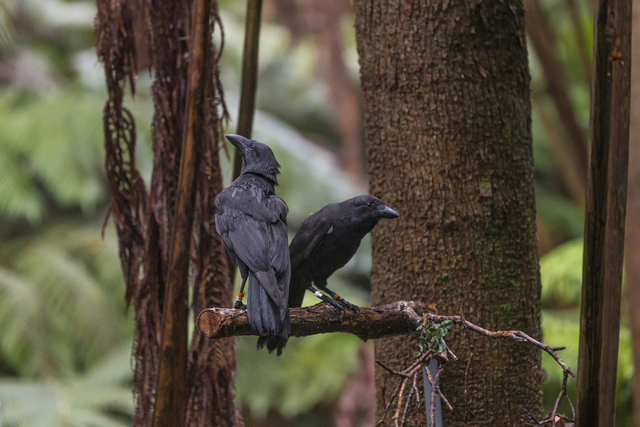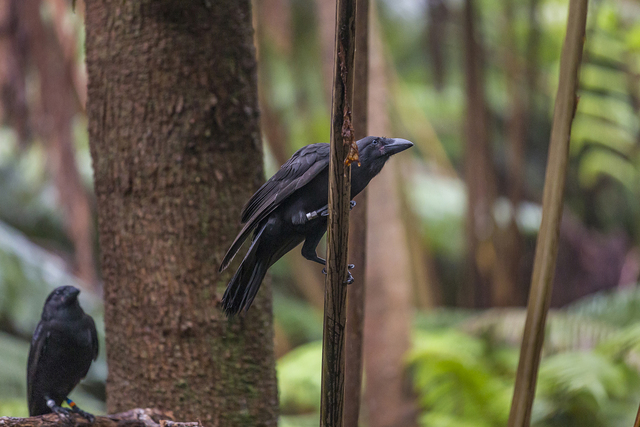HILO — A conservation story nearly two decades in the making entered its latest chapter Wednesday with the release of five young alala into the wild. ADVERTISING HILO — A conservation story nearly two decades in the making entered its
HILO — A conservation story nearly two decades in the making entered its latest chapter Wednesday with the release of five young alala into the wild.
The birds, all juvenile males, were released into Puu Makaala Natural Area Reserve. Biologists and researchers will continue to monitor them and provide supplemental food as the alala adjust to the new home, according to a statement from the state Department of Land and Natural Resources.
The alala, or Hawaiian crow, has been extinct in the wild since 2002.
It is one of several Hawaiian bird species whose numbers are being rehabilitated by the Hawaii Endangered Bird Conservation Program, part of San Diego Zoo Global. There are now more than 115 birds in the alala breeding program.
Wednesday’s release was the final stage of a three-part process to acclimate the birds, which were raised in aviaries at the Keauhou Bird Conservation Center in Volcano, to new surroundings. The birds are all between 9 and 11 months old.
The cohort was moved to a flight aviary in mid-October, and transferred to a small forest aviary last week.
Bryce Masuda, conservation program manager for the HEBCP, said the release went off with no problems.
“It was really exciting just being there (watching) the birds … fly out into the forest reserve,” he said.
It took the alala a few minutes to realize that the aviary doors were open, Masuda said, but they were almost immediately foraging for food once they left.
“They adapted quickly,” he said adding that, so far, the birds have been spending time together in the forest reserve. “Which is great to see.”
Each bird is wearing a small radio transmitter and GPS tracker so it can be monitored by researchers.
The alala breeding and release effort is a partnership between San Diego Zoo Global, the DLNR, and the U.S. Fish and Wildlife Service.
The alala benefited from local efforts such as the Three Mountain Alliance watershed partnership, which has worked to preserve the native forest at Puu Makaala. Hawaii Island schoolchildren helped select names for the five released birds, which are Pewa, Mana‘olana, ‘Ike, Kia‘ikumokuhali‘i and Kau‘ikauikalani.
“It’s something the entire community can celebrate,” Masuda said.
The release, initially planned for September, was delayed while partners continued habitat management at the reserve and taught the birds predator evasion. Hawaiian hawks (io) are natural predators of the alala.
“I think there are going to be challenges,” Masuda said. “There will be challenges for sure; they’re in a new environment.”
“But they are where they’re supposed to be,” he continued. “They’re in a forest, and that’s their home.”
A second bird release is planned for early next year.
Email Ivy Ashe at iashe@hawaiitribune-herald.com.




